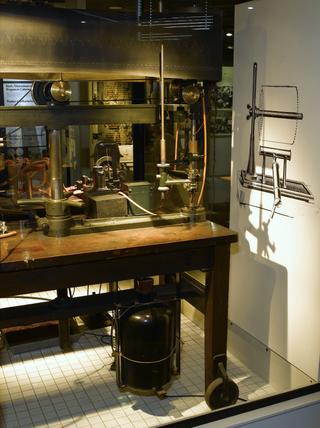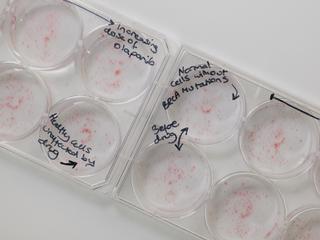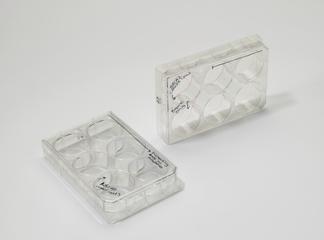Datex Deltatrac metabolic monitor
Deltatrac metabolic monitor, part of overall system for measuring oxygen consumption and carbon dioxide production, made by Datex, c.1990. Used by Professor Peter Fleming at the University of Bristol in studies associated with Sudden Infant Death Syndrome (SIDS).
More
The Deltatrac is a machine designed to measure an individual's oxygen consumption and carbon dioxide production to reveal information about their metabolism and health. It was made by the Finnish company Datex, around the 1990s. The blue canopy sits over a person's head, or in the case of a baby - their body - to capture their breath. It is connected by a tube to the metabolic monitor which analyses the amount of oxygen consumed and carbon dioxide produced.
This machine was used by Professor Peter Fleming at the University of Bristol in studies associated with Sudden Infant Death Syndrome (SIDS). In the late 1980s around 2,000 babies died suddenly and unexpectedly each year, with no identifiable reason for their cause of death. These deaths were recorded as deaths from Sudden Infant Death Syndrome (SIDS) which at the time was more commonly referred to as cot death. Researchers in the Netherlands and New Zealand identified that babies who slept on their stomachs had a much higher risk of SIDS. In the UK, Professor Peter Fleming working at the University of Bristol carried out numerous studies and confirmed these findings. This metabolic monitor was used within studies such as the South West Infant Sleep Scene Study (SWISS) and the Confidential Enquiry into Stillbirths and Deaths in Infancy (CESDI). This research helped to launch the Back to Sleep campaign in 1991, which changed the advice on babies' sleeping position from front to back. The rate of SIDS deaths has since fallen by more than 80%.





